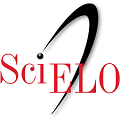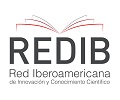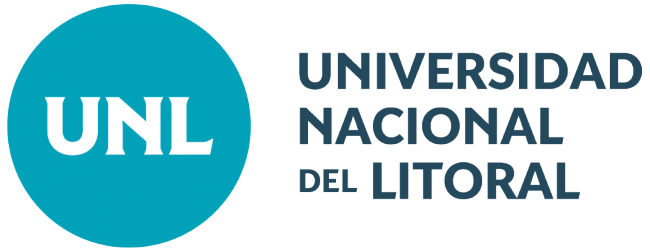Production of SARS-CoV-2 pseudotyped viral particles for the evaluation of new therapies against COVID-19
DOI:
https://doi.org/10.14409/favecv.2021.Suppl..44-50Keywords:
polyethyleneimine, transient transfection, lentivirus, SpikeAbstract
Passive immunotherapy as a treatment against SARS-CoV-2 (severe acute respiratory syndrome coronavirus-2) requires to quantify neutralizing capacity of antibodies for development of effective therapies. However, the transfection reagents necessary for its production are expensive and, consequently, it is a limitation for the scaling up production. Using of polyethyleneimine (PEI), a low-cost cationic polymer, allows to avoid this. The objective of this work was to optimize a low-cost transient transfection assay to produce pseudoparticles that express the Spike protein of SARS-CoV-2. Transfection assays were performed in HEK-293T cells treated with different PEI concentrations and evaluating different incubation times. Transfection was assesed by epifluorescence microscopy and flow cytometry, showing that the transfection condition that tends to yield better results was after 48 hours of incubation using a 1/10 ratio (pDNA / PEI). In conclusion, it has been possible to adapt a protocol to produce spike-expressing lentiviral particles using a low-cost transfection reagent. This would allow to scale up the production and, following, to design a platform for evaluation of COVID-19 therapies.
References
Abe K, Li Z, Samson R, Samavarchi-Tehrani P, Valcourt E, Wood H, Budylowski P, Dupuis A, Girardin R, Rathod B, Wang J, Barrios-Rodiles M, Colwill K, McGeer A, Mubareka S, Gommerman J, Durocher Y, Ostrowski M,. McDonough K,. Drebot M, Drews S, Rini J, Gingras A. 2020. JCI Insight 5(19): e142362.
Aslan H, Zilberman Y, Arbeli V, Sheyn D, Matan Y, Liebergall M, Li JZ, Helm GA, Gazit D, Gazit Z. 2006. Nucleofection-Based Ex Vivo Nonviral Gene Delivery to Human Stem Cells as a Platform for Tissue Regeneration. Tissue Eng. 12: 877-889.
Bošnjak B, Stein S, Willenzon S, Cordes A, Puppe W, Bernhardt G, Ravens I, Ritter C, Schultze-Florey CR, Gödecke N, Martens J, Kleine-Weber H, Hoffmann M, Cossmann A, Yilmaz M, Pink I, Hoeper MM, Behrens GMN, Pöhlmann S, Blasczyk R, SchulzTF, Förster R. 2021. Low serum neutralizing anti-SARS-CoV-2 S antibody levels in mildly affected COVID-19 convalescent patients revealed by two different detection methods. Cell Mol. Immunol. 18(4): 936-944.
Burgos LM, Diez M, Villalba L, Miranda RM, Belardi J. 2020. Impacto de la pandemia por COVID-19 en las hospitalizaciones por insuficiencia cardíaca. Medicina (B. Aires) 80: 315-316.
Czakó R, Vogel L, Lamirande EW, Bock KW, Moore IN, Ellebedy AH, Ahmed R, Mehle A, Subbaraoa K. 2017. In Vivo Imaging of Influenza Virus Infection in Immunized Mice. mBio 8: e00714-17.
Chung JY, Thone MN, Kwon YJ. 2021. COVID-19 vaccines: The status and perspectives in delivery points of view. Adv. Drug Deliv. Rev. 170: 1-25.
Crawford KHD, Eguia R, Dingens AS, Loes AN, Malone KD, Wolf CR, Chu HY, Tortorici MA, Veesler D, Murphy M, Pettie D, King NP, Balazs AB, Bloom JD. 2020. Protocol and Reagents for Pseudotyping Lentiviral Particles with SARS-CoV-2 Spike Protein for Neutralization Assays. Viruses 12: 513.
Ehrhardt C, Schmolke M, Matzke A, Knoblauch A, Will C, Wixler V, Ludwig S. 2006. Polyethylenimine, a cost-effective transfection reagent. Signal Transduct. 6: 179-184.
Fontanet A, Cauchemez S. 2020. COVID-19 herd immunity: where are we? Nat. Rev. Immunol. 20:583-584.
Hiriart Y, Pardo R, Bukata L, Lauché C, Muñoz L, Colonna M, Goldbaum F, Sanguineti S, Zylberman V. 2018. Development of a product anti-Shiga toxin for prevention of the hemolytic uremic syndrome. Medicina (B. Aires) 78: 107-112.
Huang X, Hartley A-V, Yin Y, Herskowitz JH, Lah JJ, Ressler KJ. 2013. AAV2 production with optimized N/P ratio and PEI-mediated transfection results in low toxicity and high titer for in vitro and in vivo applications. J. Virol. Methods 193: 270-277.
Johnson MC, Lyddon TD, Suarez R, Salcedo B, LePique M, Graham M, Ricana C, Robinson C, Ritter DG. 2020. Optimized Pseudotyping Conditions for the SARS-COV-2 Spike Glycoprotein. J. Virol. 94: e01062-20.
Mendoza-Pinto C, García-Carrasco M, Munguía Realpozo P, Méndez-Martínez S. 2021. Opciones terapéuticas en el manejo de la COVID-19 grave: una perspectiva de Reumatología. Reumatol. Clin. 17: 431-436.
Nie J, Li Q, Wu J, Zhao C, Hao H, Liu H, Zhang L, Nie L, Qin H, Wang M, Lu Q, Li X, Sun Q, Liu J, Fan C, Huang W, Xu M, Wang Y. 2020. Quantification of SARS-CoV-2 neutralizing antibody by a pseudotyped virus-based assay. Nat. Protoc. 15: 3699-3715.
Okba NMA, Müller MA, Li W, Wang C, GeurtsvanKessel CH, Corman VM, Lamers MM, Sikkema RS, de Bruin E, Chandler FD, Yazdanpanah Y, Le Hingrat Q, Descamps D, Houhou-Fidouh N, Reusken CBEM, Bosch B-J, Drosten C, Koopmans MPG, Haagmans BL. 2020. Severe Acute Respiratory Syndrome Coronavirus 2−Specific Antibody Responses in Coronavirus Disease Patients. Emerg. Infect. Dis. 26: 1478-1488.
Rogers TF, Zhao F, Huang D, Beutler N, Burns A, He W, Limbo O, Smith C, Song G, Woehl J, Yang L, Abbott RK, Callaghan S, Garcia E, Hurtado J, Parren M, Peng L, Ramirez S, Ricketts J, Ricciardi MJ, Rawlings SA, Wu NC, Yuan M, Smith DM, Nemazee D, Teijaro JR, Voss JE, Wilson IA, Andrabi R, Briney B, Landais E, Sok D, Jardine JG, Burton DR. 2020. Isolation of potent SARS-CoV-2 neutralizing antibodies and protection from disease in a small animal model. Science 369: 956-963.
Seidman CE, Struhl K, Sheen J, Jessen T. 2001. Introduction of Plasmid DNA into Cells. En: Current Protocols in Molecular Biology. Chapter 1:Unit1.8. Ed. John Wiley & Sons, Inc., Hoboken, Nueva Jersey, Estados Unidos.
Suthar MS, Zimmerman MG, Kauffman RC, Mantus G, Linderman SL, Hudson WH, Vanderheiden A, Nyhoff L, Davis CW, Adekunle O, Affer M, Sherman M, Reynolds S, Verkerke HP, Alter DN, Guarner J, Bryksin J, Horwath MC, Arthur CM, Saakadze N, Smith GH, Edupuganti S, Scherer EM, Hellmeister K, Cheng A, Morales JA, Neish AS, Stowell SR, Frank F, Ortlund E, Anderson EJ, Menachery VD, Rouphael N, Mehta AK, Stephens DS, Ahmed R, Roback JD, Wrammert J. 2020. Rapid Generation of Neutralizing Antibody Responses in COVID-19 Patients. Cell Reports Med. 1: 100040.
Vanderheiden A, Edara VV, Floyd K, Kauffman RC, Mantus G, Anderson E, Rouphael N, Edupuganti S, Shi P,
Menachery VD, Wrammert J, Suthar MS. 2020. Development of a Rapid Focus Reduction Neutralization Test Assay for Measuring SARS‐CoV‐2 Neutralizing Antibodies. Curr. Protoc. Immunol. 131: e116.
von Rhein C, Scholz T, Henss L, Kronstein-Wiedemann R, Schwarz T, Rodionov R, Corman V, Tonn T, Schnierle B. 2021. Comparison of potency assays to assess SARS-CoV-2 neutralizing antibody capacity in COVID-19 convalescent plasma. J. Virol. Methods. 288: 114031.
Wang M-Y, Zhao R, Gao L-J, Gao X-F, Wang D-P, Cao J-M. 2020. SARS-CoV-2: Structure, Biology, and Structure-Based Therapeutics Development. Front Cell Infect Microbiol. 10: 587269.
Yang S, Zhou X, Li R, Fu X, Sun P. 2017. Optimized PEI-based Transfection Method for Transient Transfection and Lentiviral Production. Curr. Protoc. Chem. Biol. 9: 147-157.
Zylberman V, Sanguineti S, Pontoriero A V, Higa S V, Cerutti ML, Seijo SMM, Pardo R, Muñoz L, Acuña Intrieri ME, Alzogaray VA, Avaro MM, Benedetti E, Berguer PM, Bocanera L, Bukata L, Bustelo MS, Campos AM, Colonna M, Correa E, Cragnaz L, Dattero ME, Dellafiore M, Foscaldi S, González J V, Guerra LL, Klinke S, Labanda MS, Lauché C, López JC, Martínez AM, Otero LH, Peyric EH, Ponziani PF, Ramondino R, Rinaldi J, Rodríguez S, Russo JE, Russo ML, Saavedra SL, Seigelchifer M, Sosa S, Vilariño C, López Biscayart P, Corley E, Spatz L, Baumeister EG, Goldbaum FA, Virosis S. 2020. Development of a hyperimmune equine serum therapy for COVID-19 in argentina. Medicina (B. Aires) 80: 1-6.
Downloads
Published
How to Cite
Issue
Section
License
FAVE Sección Ciencias Veterinarias ratifies the open access model, in which contents (in full) are available free to anyone in the internet. The costs of production and publication are not transfered to the authors. This policy intends to break social and economical barriers that generate inequities in the access to information, and for the publication of research results.
All articles can be accessed at http://bibliotecavirtual.unl.edu.ar/publicaciones/index.php/FAVEveterinaria/issue/current/, under license Creative CommonsAtribución-NoComercial-Compartir Igual 4.0 Internacional.










